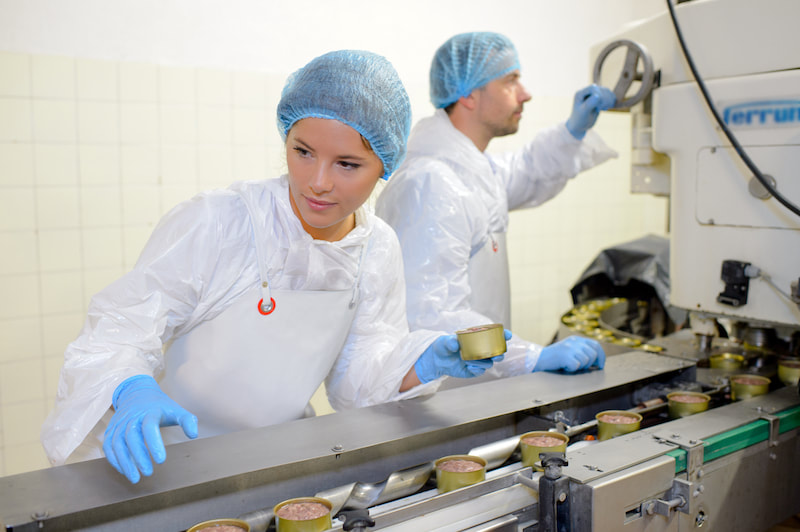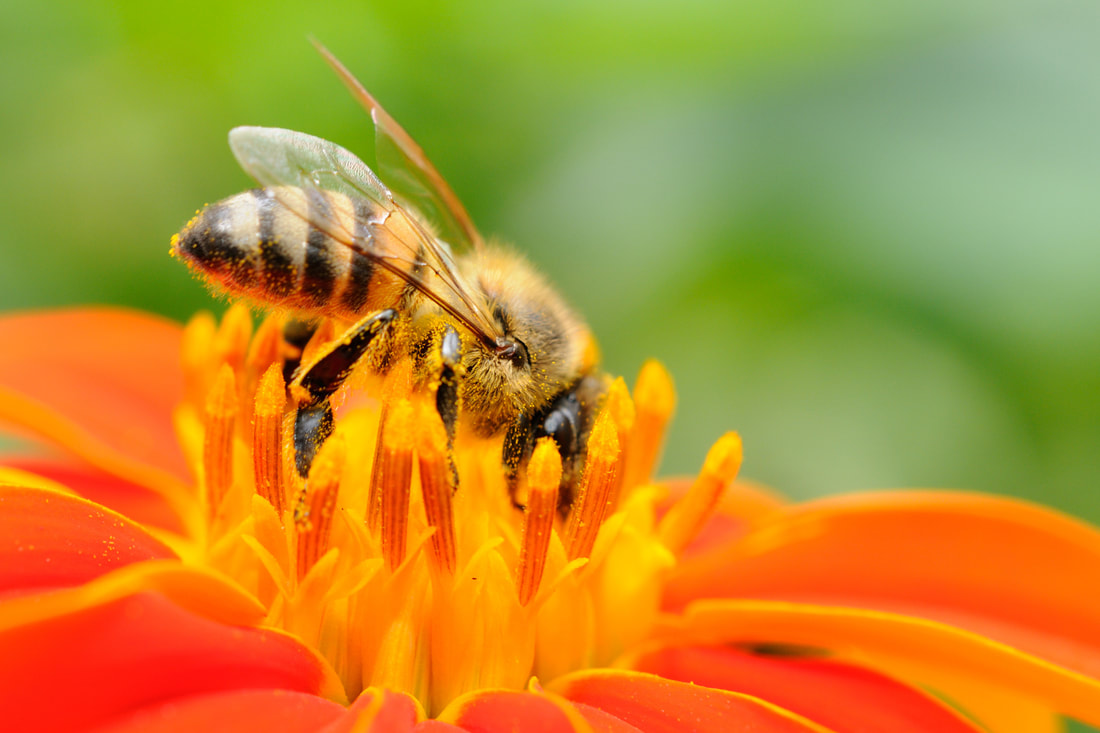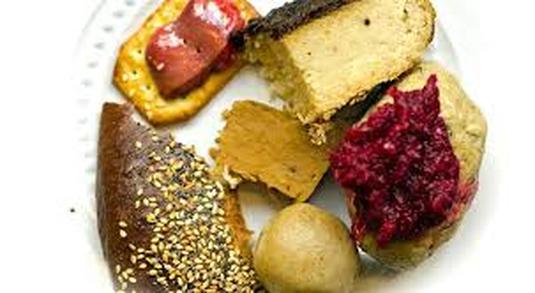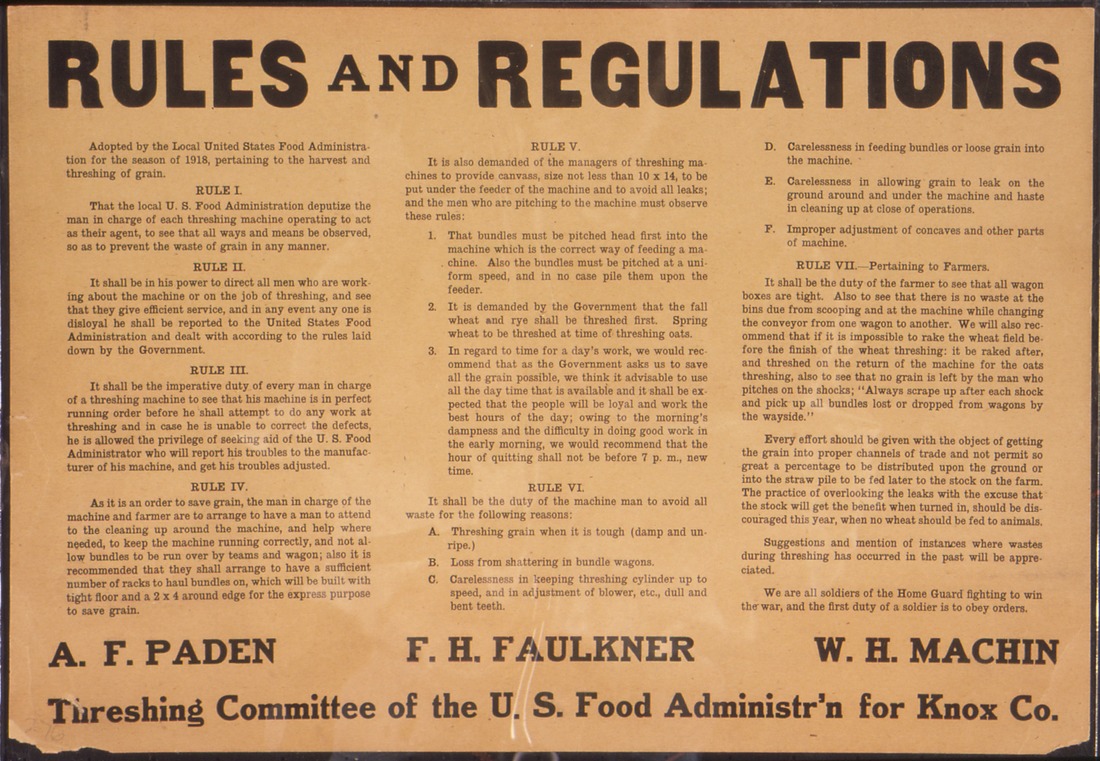|
La riforma UE sul biologico pone non pochi problemi. E l’Italia vota contro Non è tutto biologico quello che luccica4/30/2018
0 Commenti La riforma UE sul biologico pone non pochi problemi. E l’Italia vota contro di Elio Palumbieri In apertura di questo post potrebbe essere utile un disclaimer: non esprimerò un opinione sul biologico. La mia idea è la seguente: il bio, giusto o sbagliato che sia, dev’essere per il consumatore una certezza e non mi pare che la riforma vada in questa direzione. Su questo sì, proverò a dire la mia. Procediamo, quindi, per gradi. Dopo quattro anni di negoziati il Parlamento europeo ha approvato il testo di riforma delle regole dell’agricoltura bio con 466 voti a favore, 124 contrari e 50 assenti. Ora il Consiglio UE dovrà formalmente approvare la riforma che entrerà in vigore dal 1 gennaio 2021. I contenuti della riforma Il testo, che mira a garantire che solo i prodotti biologici di qualità siano importati nell’Unione europea, prevede una serie di modifiche all’attuale assetto normativo. In particolare:
Alle disposizioni appena menzionate, tuttavia, si contrappongono numerose deroghe. Le principali sono le seguenti:
Il nostro Paese è, da sempre, tra i maggiori sostenitori di una politica del biologico più severa. In particolare, infatti, del testo di riforma non è piaciuta la possibilità per paesi come l’Italia, di imporre regole più severe abbinata al divieto di impedire la commercializzazione nel proprio mercato di prodotti di altri Paesi europei che hanno deciso di non irrigidire regole e disposizioni. Insomma, i prodotti biologici prodotti in Italia potranno anche essere particolarmente salubri ma nei nostri supermercati troveremo prodotti provenienti da altri paesi la cui produzione è sottoposta a regole meno stringenti. il post per Studio Cataldi di Elio Palumbieri
Ormai da qualche tempo di sente parlare della necessità di tutelare e salvaguardare le api. D’altronde la loro minaccia non è una novità. Sul punto si era già espressa l’EFSA (l’Autorità Europea per la Sicurezza Alimentare) la quale aveva confermato i rischi per le api derivanti dall’impiego di tre pesticidi della classe dei neonicotinoidi.
Cosa sono i neonicotinoidi Si tratta della alternativa al DDT derivante dalla nicotina e spruzzata su foglie, messa nel suolo in forma granulare o usata nel trattamento dei semi. Tali pesticidi e, in particolare, i principi attivi del clothianidin, imidacloprid e thiamethoxam, possono in effetti nuocere alla salute delle api da miele e di quelle selvatiche e solitarie. Il parere dell’Autorità era stato chiesto al fine di permettere agli Stati e alla Commissione UE di esprimersi sul divieto di tali principi attivi dopo che, nel 2013, erano state imposte alcune restrizioni consistenti nel divieto per uso esterno limitato, però, ad alcune colture e a determinati periodi dell’anno. Il regolamento Ebbene, nella giornata odierna il Comitato permanente dell’Ue su piante, animali, cibi e mangimi (Paff) ha approvato la proposta della Commissione europea volta a proibire l’uso esterno nel territorio dell’Unione a neonicotinoidi. A favore della proposta della Commissione hanno votato 16 Stati membri: Germania, Estonia, Irlanda, Grecia, Spagna, Francia, Cipro, Italia, Lussemburgo, Malta, Olanda, Austria, Svezia, Slovenia, Portogallo e Regno Unito. Contrari alla proposta 4 Paesi: Repubblica ceca, Danimarca, Ungheria e Romania. Astenuti: Bulgaria, Belgio, Croazia, Lettonia, Lituania, Polonia, Slovacca, Finlandia. Con questa misura, l’UE pone un freno – pur se limitato – alla moria delle api e degli altri insetti impollinatori, essenziali per la tutela della biodiversità e, di conseguenza, della produzione alimentare. Il regolamento che vieta i tre neonicotinoidi entrerà in vigore entro la fine dell’anno dopo l’adozione formale della Commissione nelle prossime settimane. Nato per rispettare i dettami della religione ebraica oggi viene percepito come garanzia di salubrità photo credit: http://www.finedininglovers.i Non tutti hanno sentito parlare di Kosher ma qualcuno avrà sicuramente visto la puntata del noto programma Masterchef che ha imposto ai propri concorrenti di cucinare, in un’occassione, secondo le regole Kosher. Ebbene, letteralmente, Kosher significa corretto, adatto, appropriato e con questo termine si indicano le regole della legge ebraica relative al cibo.
Il mercato Koscher, tuttavia, vanta una crescita particolarmente alta, specie in paesi come gli Stati Uniti, perché le regole di produzione e commercializzazione garantiscono una particolare cura dell’origine dei prodotti e aumentano la percezione di salubrità. Per questo il consumo non avviene solo per motivi religiosi e, infatti, stando ad una ricerca del gruppo Mintel, solo il 15% dei chi compra questi prodotti lo fa per motivi religiosi. Molte catene, tra cui Wal-Mart, Costco, FreshDirect e Trader Joe’s, stanno prestando attenzione ai prodotti Kosher, particolarmente ricercati anche da vegetariani e vegani. Negli States, il settore ha toccato i 200 miliardi di dollari di fatturato occupando un terzo del mercato degli alimenti confezionati (circa 250mila tra alimenti e bevande). I requisiti fondamentali Kosher sono molti, eccone alcuni: - Divieto di mescolare carne e latticini nello stesso pasto: la Torah raccomanda di non cuocere “il capretto nel latte di sua madre”. Per questo è vietato cucinare contemporaneamente latte e derivati con carne di qualunque animale - E’ consentito il consumo di animali ruminanti e con lo “zoccolo fesso” ovvero spaccato in due parti (pecora, capra, mucca, vitello) - Il rituale della macellazione deve essere obbligatoriamente tenuto da un Rabbino con la specifica competenza per farla - Sussiste, inoltre, il divieto assoluto di consumare il sangue dal quale è escluso il sangue dei pesci permessi (quelli con pinne e squame cme merluzzo, sogliola, carpa, luccio, muggine, salmone). - Non possono essere consumate alcune parti di grasso - Particolarmente complessa, invece, è la produzione di vino. Questo, infatti, per essere definito Kosher deve rispettare tutte le regole della Kashernut nella coltura della vite e nella vinificazione. In Italia, ad oggi, sono circa 170 le aziende certificate kosher; tra queste: Barilla, Lavazza, Bonomelli, Ferrarelle. Stando ad una ricerca dell’osservatorio Immagino della Nielsen, l’acquisto dei prodotti Kosher nel nostro paese è cresciuto nel 2016 del 7,8%. Per le aziende italiane questa certificazione potrebbe essere d’aiuto nel conquistare nuovi mercati. As with many aspects of the United States legal framework, the history of food regulation in the US is a story of push and pull between state and federal powers, all of it often standing on a base of English precedent.
In 1202, King John of England proclaimed the first English food law, the Assize of Bread. This law prohibited the adulteration of bread with such ingredients as ground peas or beans, and established weights, quality standards, and prices of beer and bread sold in England. In 1646 the Massachusetts Bay Colony enacted a law with almost identical wording. While designations might have changed from Colony to State after the American Revolution, the regulation of food was still thought to be a local concern, and there was limited involvement from the fledgling federal government. For any readers unfamiliar with the US legal system, a quick summary of branches and operations may be helpful. The US legal system has three branches: The Legislative branch, the United States Congress, is responsible for creating laws. The Execute branch, the President and a variety of federal agencies, are responsible for implementing and enforcing these laws, directly and through regulatory guidance. The Judicial branch, the courts, resolves legal disputes and enforces the laws. The Federal government has a specific list of powers, and anything that doesn’t fit within this realm is power held by the States. One specific power the US Congress and Federal government have is the ability to regulate anything that is a part of interstate commerce. Federal regulation of food in the US began at its most basic level in 1837, when Henry Leavitt Ellsworth was appointed Commissioner of Patents within Department of State. Ellsworth worked heavily with seeds and plants, and as a result of his interactions with Congressmen, in 1839 Congress established the Agricultural Division within the Patent Office to focus agricultural statistics. In 1849 the Patent Office was transferred to the Department of the Interior, and after several years of debate about the need for a separate department, Abraham Lincoln created the Department of Agriculture in 1862. That same year Lincoln began the Bureau of Chemistry within the Department of Agriculture. From the 1860s through the early 1900s the US saw rapid changes in food technology, from canning to chemical additives that deterred (and sometimes hid) spoilage of the food. The adulteration of food became a very real concern for the average consumer. After extensive food adulteration investigations, the chief chemist of the USDA recommended passage of a national food and drug law that would allow regulation and enforcement by the federal government. This proposal failed, as did roughly 100 bills passed in this 25 year time period. While such inaction may seem unreasonable in hindsight, Congress was not purposely absent on this matter; they simply left the regulation of food to the states and localities. Two examples of affirmative action include the Tea Importation Act, which allowed customs inspection of all tea entering US ports with costs paid by the importer, and the Biologics Control Act, which was passed to ensure the purity and safety of products to prevent disease, and to study chemical preservatives & colors and their effect on health. Perhaps the most significant law during this time was The Oleomargarine Act of 1886, which not only taxed margarine, but heavily taxed margarine colored to look like butter. The courts affirmed this federal regulation in McCray v. United States (1904), 195 U.S. 27. Everything changed in 1906, arguably due to Upton Sinclair’s book, The Jungle. An exposure of the filthy conditions of Chicago slaughterhouses, Sinclair brought to light terrifying practices running rampant in the food trade, including “tuberculosis beef.” The outcry from this book led President Theodore Roosevelt to begin an investigation, resulting in the Neill-Reynolds Report. The findings of the report combined with the outcry from the book led to the quick passage of the Pure Food and Drugs Act of 1906, which prohibited interstate commerce in misbranded and adulterated foods, drinks, and drugs. The Act required that active ingredients be placed on the label of a drug’s packaging, and directed the Bureau of Chemistry to inspect products and refer offenders to prosecutors. The Meat Inspection Act, was passed the same day, and was housed in a different department, now known as the Food Safety and Inspection Service. While often perceived as related, from this day on the fates of food and drugs became inextricably intertwined in the United States. For the next 22 years the Pure Food and Drugs Act allowed the Department of Agriculture, and the courts, to make drastic changes in how the country consumed food. Quickly following amendments and cases prohibited false therapeutic claims, required conspicuous labeling, and banned misleading statements on packaging. The power was not absolute however, as the courts held the government could not ban food additives without showing how the additive caused harm. In 1927 the Bureau of Chemistry was reorganized into two groupings: the Food, Drug, and Insecticide Administration, and the Bureau of Chemistry and Soils; by 1930 the former was renamed the Food and Drug Administration. Within a few years the FDA called for new regulations claiming that the 1906 act was obsolete. In 1937 the Elixir of Sulfanilamide killed 107 persons, dramatizing a need to establish drug safety before marketing, and to revamp the existing frameworks. In 1938 Congress passed the Federal Food, Drugs, and Cosmetic Act, with several new provisions. The FDA now had control of cosmetics and therapeutic devices, set safe tolerances for unavoidable poisonous substances, was authorized to inspect factories, and was authorized to set standards of identity and quality. This Act was the beginning of the FDA we knew today. While specific regulations have grown in a piece-meal matter since the Act was passed, and the FDA’s power has grown through a variety of amendments related to the safety of food and drugs. As of 1988 the FDA is no longer part of the Department of Agriculture, but is a part of the Department of Health and Human Services. The Food Safety and Inspection Service still remains a part of the Department of Agriculture, and both the FDA and FSIS still control and regulate food in the United States. Today, the FSIS has primary responsibility for meat, poultry, and eggs; the FDA is primarily responsible for most other food products. The most meaningful piece of legislation since 1938 was the Food Safety Modernization Act, signed into law by President Barack Obama in 2011. This Act has given the FDA new powers, including the authority to regulate the way foods are grown, harvested, and processed, in addition to a mandatory recall authority for unsafe foods. Governmental oversight breaks the US market into several sectors, and approaches each differently. Consumers—the governmental goal is to educate consumers and provide them information so that they may make informed decisions. Retail and foodservice—while the FDA provides guidance, these sectors are still primarily regulated by state laws and municipal health codes. Processing—primarily regulated by the Federal agencies. Production—the governmental strategy has primarily been one of education so as to create safe agricultural products, but there is increasing direct governmental regulation. Production input—composed of inputs that could directly impact the safety of final products, from pesticides and bovine antibiotics to biotechnology, this sector is extensively regulated by federal law. All of the above is a highlighted background from an increasingly complex regulatory world. As part of an intercontinental collaboration with Studio Legale Palumbieri, expect to see this and posts that get into the nitty-gritty of food laws in the United States and Europe, including the importation of European and Mexican foods into the United States. Questions or ideas? E-mail : Hardeep Grover at [email protected] or Elio Palumbieri at [email protected] For further information see https://tresquire.com & https://www.studiolegalepalumbieri.it/ Ecco il video a commento del post pubblicato per Studio Cataldi: https://www.studiocataldi.it/articoli/29967-la-responsabilita-da-prodotto-difettoso-nel-settore-alimentare.asp |
Details
Archives
April 2022
|
Pagine |
© COPYRIGHT 2016. ALL RIGHTS RESERVED.
Avv. Alfonso Palumbieri
Partita I.V.A. 03827740725 Via Indipendenza, 22, 76121, Barletta (BT) |






 RSS Feed
RSS Feed